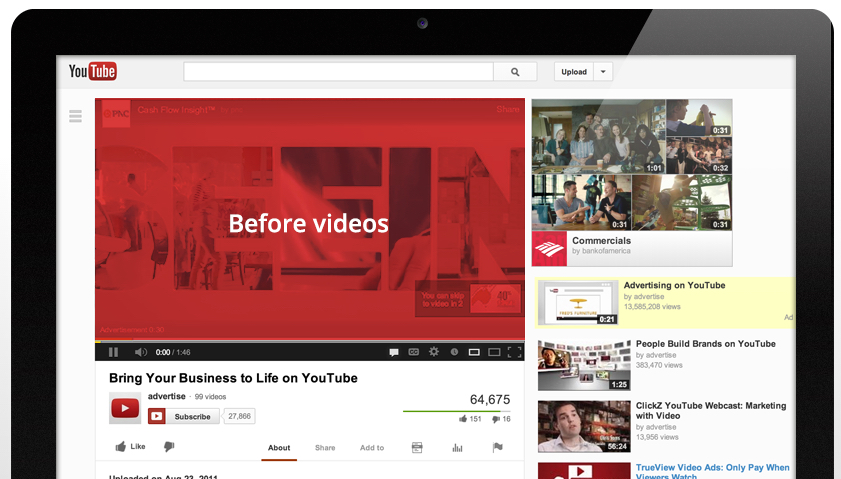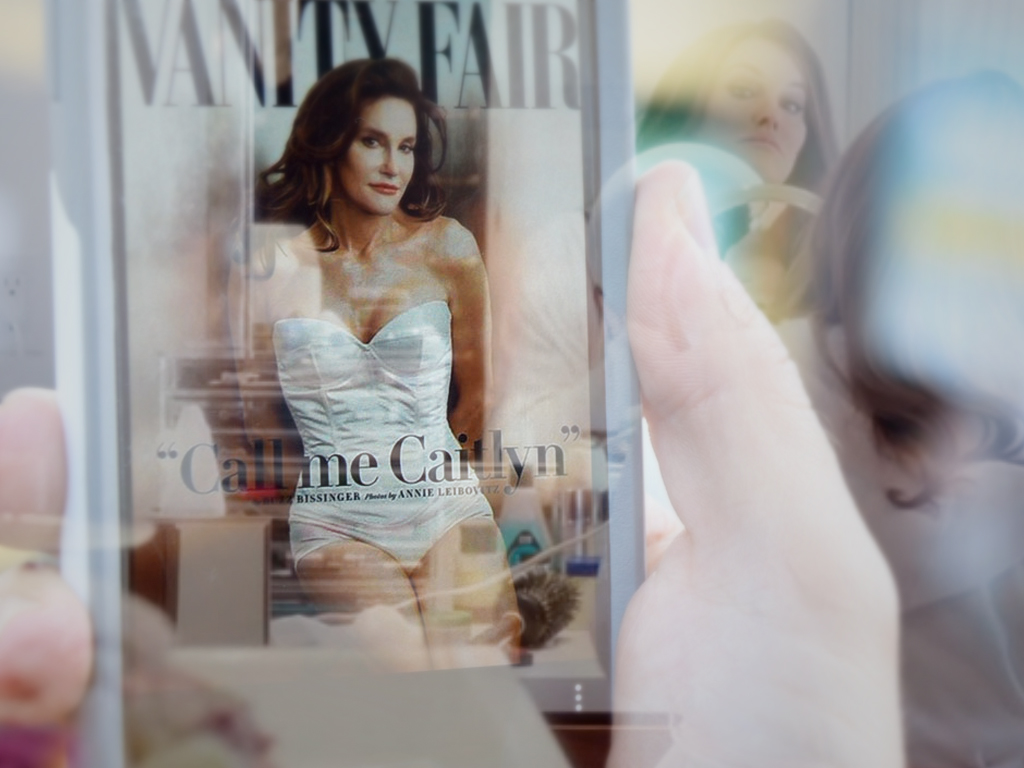Babevertising has a long and storied history in the Super Bowl, including recent highlights like Bar Refaeli smooching a nerd for GoDaddy, Kate Upton blowing bubbles for Mercedes, and Charlotte McKinney making puns for Carl’s Jr. But Super Bowl 50 was different. In fact, there was a conspicuous absence of babes, other than perhaps Helen Mirren, or Ryan Reynolds and Drake. Why?
https://www.youtube.com/watch?v=4WTA_8waxTo
Mirren’s relative babeworthiness is a debate for another time and place, but it is worth noting her Super Bowl debut came at an intriguing cultural moment in the U.S.
Hillary For America
Americans are closer to having a woman in the White House than they’ve ever been before. This has inspired plenty of debate about what it means to be a feminist and who women should vote for, which was prompted in part by controversial remarks from both Madeleine Albright, the first female secretary of state, and feminist icon Gloria Steinem.
But this cultural backdrop extends well beyond politics to include major moments in sports, entertainment, and media – all with powerful, influential women at their core.
Queen Bey
Look at Beyoncé, for example.
Knowles’ latest video, Formation, which debuted just a day before her Super Bowl 50 halftime show performance, has 29.1 million views on YouTube alone.
What’s more, Knowles arguably stole the show with her live performance, which, conveniently, was followed by a Super Bowl ad announcing her world tour – and even the latter video has a respectable 1.4 million views.
Further, per social media analytics tool Talkwalker, #Formation has been used nearly 503,000 times since February 7.
As an additional testament to Knowles’ power, the political, cultural and social themes in Formation were the subject of analysis in the New York Times.
Even though her Super Bowl performance incited controversy, the reaction included an anti-Beyoncé rally the New York Post called “the worst attended protest ever,” in which one of roughly five protesters saw his sign damaged in the rain “because he forgot to laminate it.”
Perhaps the real kicker is that one of the song’s most memorable lyrics was enough to drive sales up 33 percent at Red Lobster on Super Bowl Sunday versus the year-ago period and the brand says it was a trending topic on Twitter for the first time ever, as well as the subject of more than 300,000 tweets over Super Bowl weekend – including 42,000 mentions in a single hour on February 6.
Shake It Off
Then there’s crossover darling Taylor Swift, who is undoubtedly the public victor in her latest spat with rapper and Kardashian spouse Kanye West.
West’s new song “Famous” includes a line in which he claims credit for Swift’s fame, presumably after the unforgettable moment when he interrupted her acceptance speech at the 2009 MTV Video Music Awards when she bested, funny enough, Beyoncé.
According to reports, Swift’s rep said Swift declined to promote the song and “cautioned [West] about releasing a song with such a strong misogynistic message.”
Swift later took full advantage of the opportunity afforded her at the Grammys to deliver a widely lauded acceptance speech in which she reminded young women not to let anyone undercut their success or take credit for their accomplishments.
‘Beauty Doesn’t Take Just One Form’

What’s more, the Sports Illustrated Swimsuit Edition, one of our nation’s most beloved annual traditions, amended its tried-and-true 51-year formula this year to include three cover models because “beauty doesn’t take just one form.”
Regardless of how true this actually rings, one cover girl, Ashley Graham, is the first plus-size model to grace its front page, and another, Ronda Rousey, is perhaps best known for her armbar submission within the Octagon or her turn as a bodyguard for the Bud Light Party.
In addition, 2016 also marks the year “mature model” Nicola Griffin became the oldest woman to appear in the Swimsuit Edition in a campaign for curvy swimsuit retailer swimsuitsforall.
Also, self-proclaimed fashion doll Barbie, which, interestingly enough, is just one year older than Griffin at 57, also recently made headlines for adding three new body types.
“We are excited to literally be changing the face of the brand – these new dolls represent a line that is more reflective of the world girls see around them – the variety in body type, skin tones and style allows girls to find a doll that speaks to them,” said Evelyn Mazzocco, senior vice president and global general manager of Barbie, in a release.
Babevertising 2.0
It’s this statement about the world consumers see around them that is perhaps the best lens through which to view the future of sex in advertising.
Per Rebecca Brooks, a founder of Alter Agents Market Research, we are at a turning point for women in American culture in part because women are changing the conversation about themselves.
“Women are now in more leadership positions in media, marketing and branding. They are bringing a new perspective. There is also a resurgence of feminists…[And New York Magazine] just announced on its cover page that single women are the most important voting block in this next election. Women are front and center.”
This means babevertising is waning, Brooks said.
But those coveted/dreaded Millennials are also a driving force.
Whatever Millennials Want
Aurelie Guerrieri, co-president of Women in Wireless, a nonprofit that says it “empowers and develops female leaders in mobile and digital media,” notes younger consumers are more aware of diversity and expect brands to understand and represent them, meaning babes don’t resonate. “
Advertisers who can capitalize on this and turn the myth on its head, [like Willem Dafoe as Marilyn Monroe for Snickers] project a much edgier, fresher image and are able to connect with a wider swath of the audience,” she said.
https://www.youtube.com/watch?v=WhfntLl6xx0To wit, perhaps: Snickers’ 2016 Super Bowl spot came in at #16 in USA Today’s Ad Meter.
“I think we are entering a cultural moment where society is celebrating the individual,” said Rosie Garschina, associate creative director at creative studio Trollback + Company. “Images that we identify as powerful and beautiful are no longer defined by gender, race or orientation. Younger generations are not interested in social norms, but rather equality, inclusivity and what makes us unique as individuals. Advertising is embracing this movement.”
Emily McInerney, the other co-president of Women in Wireless, agrees there has been a shift in perceptions of beauty, which was in part pioneered by Dove in its Real Beauty campaign.
Always’ recent Girl Emojis video, which is an extension of its larger #LikeAGirl effort and seeks to empower girls to ask for emojis that better reflect themselves, is another good example.
https://www.youtube.com/watch?v=L3BjUvjOUMc“Now more than ever, brands are listening to the fact that customers want to see faces and bodies that they can relate to,” McInerney said. “Even the biggest babe of them all, Barbie, got a body makeover. If that is not telling of the times, I don’t know what is.”
Girls, Girls, Girls
In addition, brands are catering more to growing female audiences for events like the Super Bowl and creating content specifically for them, Guerrieri said.
That includes Hyundai’s Ryanville spot, which ranked #5 in Ad Meter this year and arguably objectified one-time Sexiest Man Alive Ryan Reynolds.
Jessica Thiele, marketing manager of data integration services provider Virtual Logistics, also observes that in many households, women tend to do most of the shopping and therefore have buying power, so even brands with male targets may be coming to realize they can reach their market by appealing to women.
‘We’ve Seen It Already’
Further, oversaturation may be to blame for the demise of babevertising.
“The shock value of scantily clad women and sexy innuendos has lost its impact,” Brooks said. “Advertisers are talking to a generation that grew up with cable television and the Internet. We’ve seen it already. Brands are realizing that they have to move past titillation to get attention.”
Daniela Cuevas, creative director at digital and social agency The Spark Group, agrees babes just don’t cut through the noise anymore.
“At this point, we’re desensitized to those types of commercials and they’re no longer effective,” she said. “They are not shock-worthy to us anymore, especially these days where everyone is naked on television.”
For her part, Paige Arnof-Fenn, CEO of marketing consulting firm Mavens and Moguls, points to a recent and notable shift in adult entertainment.
“Look at Playboy. When it started, it was a bit racy and scandalous and now they do not even have nudity. And guess what: their advertising has increased,” she said. “Maybe it is Millennials, maybe it is our 24/7 online culture, but there just has to be more than a naked or bikini-clad woman in an ad to get attention these days. “
Treading Lightly
Brands may also shy away from sex in advertising over backlash fears.
In other words, prominent national discourse includes threads about feminism and body image and some marketers say babevertising is taking a hit as a result.
Thiele notes even brands like Dove, which have attempted to incorporate these movements, have come under fire for their efforts, which may be perceived as hollow.
However, an unintended consequence may be more creativity among marketers looking for alternatives.
“Brands don’t want that type of negative backlash, so I believe this has forced some brands to put on their thinking caps and create different types of effective ads,” Cuevas said. “There will be those brands that won’t care and will [use] babevertising, but I believe times have changed.”
Per Arnof-Fenn, we certainly haven’t seen the end of objectification in advertising – “not a chance” – but, she said, “I do think [Budweiser’s Helen Mirren spot] will encourage other brands be more creative and take risks going forward.”
‘Marketing’s Dirty Little Secret’
Or, as Brooks puts is, while sex will always be a part of advertising, in a way, babevertising is growing up.
“I [would say it’s] maturing from appealing to 14-year-old boys to appealing to savvy adults,” she said.
And Thiele concedes many consumers actually like babevertising, which is another reason it will never disappear completely.
“I think what’s happening with babevertising is instead it’s going online. Targeted ads, brands on social media, etc.,” Thiele said. “Babevertising today is almost transforming into marketing’s dirty little secret — it still works on certain target demographics, but to avoid the media backlash, it’s gone underground.”
Do you think sex has lost its mainstream marketing power for good?



